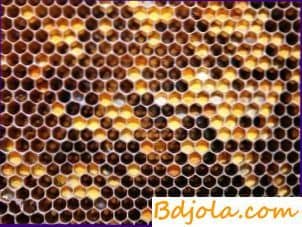
Each plant has pollen grains of a certain shape (spherical, triangular, polyhedral), different in color (from white to dark brown), a size that in different plants is 0.01 to 0.05 mm in diameter. Plants form a huge amount of pollen grains. For example, one apple tree contains about 100 thousand, hazel – 4 million, birch – 6 million, and corn – about 60 million pollen grains. Of all the pollen produced by plants, only a small amount is used for the purpose – pollination of the flower. And most of the pollen settles on the surface of the soil, water and becomes food for numerous living organisms – from animals to unicellular microorganisms.
Pollen gets into the lungs and, according to some scientists, is absorbed by the body, favorably influencing it. But in people sensitive to pollen, it causes allergic reactions, sometimes painful, unpleasant. The same pollen, taken inside, is extremely valuable for the body.
Flower pollen represents the male germ cells of floral plants. This is an irreplaceable source of proteins, fats and vitamins in the stern for bees. Visiting flowers, bees collect pollen and fold it in the form of lumps in a special device of hairs on the third pair of legs – the basket. These lumps of pollen, bees are brought to a beehive and put in empty cubby boxes around the brood or on the second from the edge of the frame.
Pollen, collected by bees in baskets, immediately loses its ability to germinate. This is due to the action of fatty acid (10-hydroxy-2-decene), which is excreted by the jaw glands honey bees.
The beek beetles are rammed into the refreshment in the closet, filled with honey and sealed with wax on top. Pollen, folded in a cell of honeycombs and covered with honey on top, is called perh. Perga can persist for a long time, as milk-acid fermentation takes place in the condensed pollen, and lactic acid, which forms at the same time, protects the pollen from spoilage, preserves it.
The source of pollen collection can be determined both by the color of the update and by the morphological structure of the pollen grains. For example, the pollen of the dandelion has a bright orange color, red-brown clover, buckwheat – dirty yellow, willow – yellow.
Some of the pollen grains come from the body of the bees into honey, where they retain their color and structure. Microscopic research can accurately determine from which plant species are harvested honey and what kinds of pollen it predominates.
Две семьи в ульях. Как правильно наващивать рамки.
Pollen and Perga